#EMT Basic Training San Diego
Explore tagged Tumblr posts
Text
Become an Emergency Medical Technician (EMT) with our EMT Basic classes. Our courses are designed to give you the skills and knowledge needed to provide life-saving care in emergency situations. Learn from experienced instructors and get certified today!
0 notes
Text
Life-Saving CPR and Certification Programs in Alpine
Alpine, a picturesque community nestled in San Diego County, is a place where safety and preparedness are a priority. For residents and professionals alike, learning CPR and other life-saving techniques in Alpine can make a significant difference in emergency situations. CPR (Cardiopulmonary Resuscitation) in Alpine is a critical skill that can save lives by providing immediate care during cardiac arrest or respiratory failure. This essential training is available to anyone who wishes to be prepared in case of an emergency, whether at home, work, or in the community.
BLS Certification in Alpine
ACLS in Alpine
ACLS Certification in Alpine
PALS in Alpine
PALS Online in Alpine
NRP in Alpine
CPR Certification in Alpine is offered through programs that are accredited by recognized organizations like the American Heart Association (AHA). These certification programs teach individuals how to properly perform chest compressions and rescue breaths, as well as how to use an Automated External Defibrillator (AED) during a cardiac event. CPR Classes in Alpine include both theoretical learning and practical, hands-on experience, ensuring that participants are fully prepared to respond to real-life emergencies.
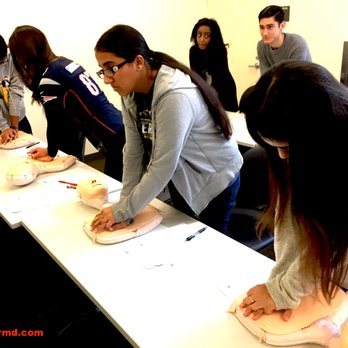
Beyond CPR, First Aid Certification in Alpine is another crucial course that provides individuals with the skills to manage non-life-threatening medical emergencies. First Aid classes cover a wide range of situations, from treating cuts, burns, and fractures to managing allergic reactions and shock. This training is invaluable in both professional and personal settings, giving individuals the ability to offer immediate assistance while waiting for emergency services.

For healthcare professionals and first responders, BLS (Basic Life Support) Certification in Alpine is a key requirement. BLS training goes beyond basic CPR, covering team-based resuscitation techniques, advanced airway management, and the proper use of AEDs. BLS in Alpine is designed for those in roles where they may need to respond to a medical emergency at any time, such as nurses, EMTs, and lifeguards.
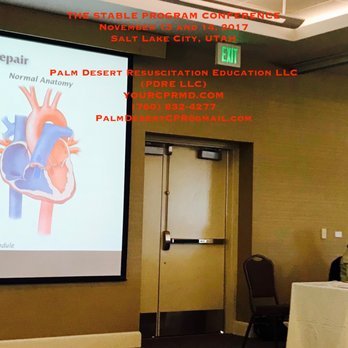
Advanced certifications like ACLS (Advanced Cardiovascular Life Support) in Alpine are available for healthcare providers who need to manage more complex medical emergencies, such as cardiac arrest and stroke. ACLS Certification in Alpine teaches participants how to recognize and treat life-threatening conditions, incorporating ECG interpretation, pharmacology, and advanced airway management. For pediatric healthcare professionals, PALS (Pediatric Advanced Life Support) in Alpine offers specialized training in pediatric emergencies, ensuring that providers can deliver the appropriate care for infants and children.
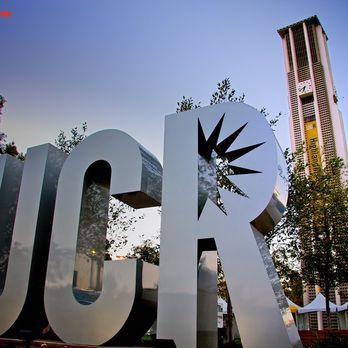
Additionally, PALS Online in Alpine provides a flexible option for those who need to complete their certification but have demanding schedules. Finally, NRP (Neonatal Resuscitation Program) in Alpine is a critical course for those involved in the care of newborns, teaching the latest techniques in neonatal resuscitation and preparing professionals to handle emergencies in delivery rooms and NICUs.
youtube
Address : PDRE SAN DIEGO OFFICE
9500 Gilman Dr.
La Jolla, CA 92093
1-760-832-4277
Website : https://yourcprmd.com/sandiego/alpine-cpr-classes/
1 note
·
View note
Text
The ranks of America’s Astronaut Corps grew by 11 today!
After completing more than two years of basic training, our graduating class of astronauts is eligible for spaceflight. Assignments include the International Space Station, Artemis missions to the Moon, and ultimately, missions to Mars.
The class includes 11 astronauts, selected in 2017 from a record-setting pool of more than 18,000 applicants. This was more than double the previous record of 8,000 applicants set in 1978.
Meet the graduates:
Kayla Barron

“If you don’t love what you’re doing, you’re not going to be good at it. I think it’s a combination of finding things that you really love that will also be really challenging and will force you to grow along the way.”
This Washington native graduated from the U.S. Naval Academy with a bachelor’s degree in systems engineering. As a Gates Cambridge Scholar, which offers students an opportunity to pursue graduate study in the field of their choice at the University of Cambridge. Barron earned a master’s degree in nuclear engineering.
As a Submarine Warfare Officer, Barron was part of the first class of women commissioned into the submarine community, completing three strategic deterrent patrols aboard the USS Maine.
Zena Cardman

“Every STEM opportunity that I have ever gone down is because of some mentor who inspired me or some student who was ahead of me in school who inspired me.”
Zena Cardman is a native of Virginia and completed a bachelor’s degree in biology and master’s degree in marine sciences at The University of North Carolina, Chapel Hill. Her research has focused on microorganisms in subsurface environments, ranging from caves to deep sea sediments.
An intrepid explorer, Cardman’s field experience includes multiple Antarctic expeditions, work aboard research vessels as both scientist and crew, and NASA analog missions in British Columbia, Idaho, and Hawaii.
Raja Chari

“I grew up with the mentality that education is truly a gift not to be taken for granted.”
This Iowa native graduated from the U.S. Air Force Academy in 1999 with bachelor’s degrees in astronautical engineering and engineering science. He continued on to earn a master’s degree in aeronautics and astronautics from Massachusetts Institute of Technology (MIT) and graduated from the U.S. Naval Test Pilot School.
Chari served as the Commander of the 461st Flight Test Squadron and the Director of the F-35 Integrated Test Force. He has accumulated more than 2,000 hours of flight time in the F-35, F-15, F-16 and F-18 including F-15E combat missions in Operation Iraqi Freedom.
Matthew Dominick
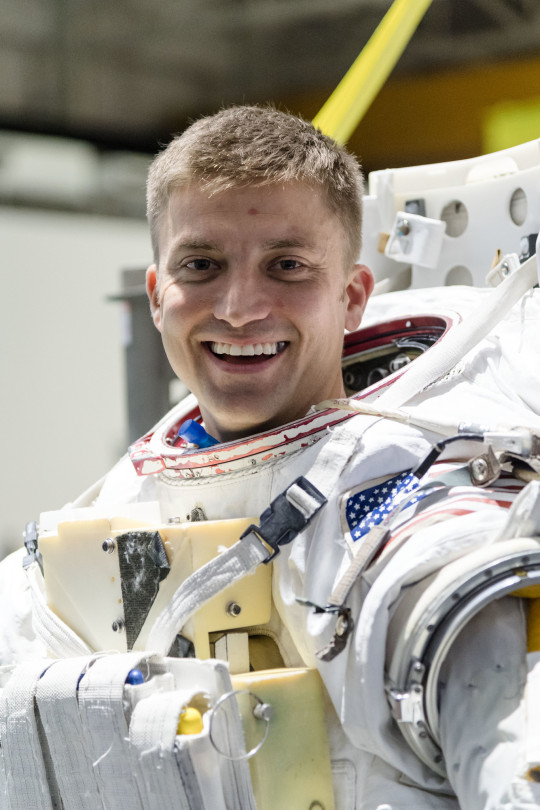
“I get to work with incredible people that want to solve problems and are passionate about it. I really want to contribute to the world and this is how I want to do it.”
This Colorado native earned a bachelor’s degree in electrical engineering from the University of San Diego and a master’s degree in systems engineering from the Naval Postgraduate School. He also graduated from U.S. Naval Test Pilot School.
Dominick served on the USS Ronald Reagan as department head for Strike Fighter Squadron 115. He has more than 1,600 hours of flight time in 28 aircraft, 400 carrier-arrested landings and 61 combat missions.
Bob Hines
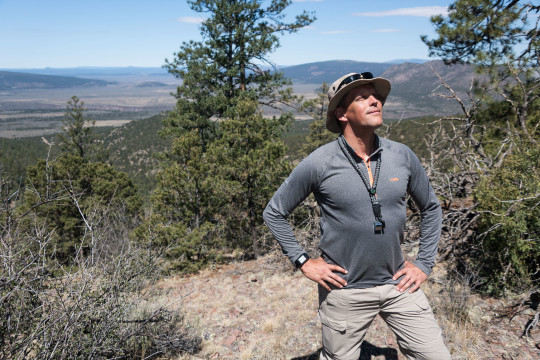
“As you get older, other things become important to you, like being a part of something that’s bigger than yourself. This human endeavor of exploration is something that’s really exciting.”
Bob Hines is a Pennsylvania native and earned a bachelor’s degree in aerospace engineering from Boston University. He is a graduate of the U.S. Air Force Test Pilot School, where he earned a master’s degree in flight test engineering. He continued on to earn a master’s degree in aerospace engineering from the University of Alabama.
Hines served in the U.S. Air Force and Air Force Reserves for 18 years. He also served as a research pilot at our Johnson Space Center. He has accumulated more than 3,500 hours of flight time in 41 different types of aircraft and has flown 76 combat missions in support of contingency operations around the world.
Warren Hoburg

“It was back in high school that I realized that I was really interested in engineering. I always liked taking things apart and understanding how things work and then I also really enjoy solving problems.”
Nicknamed “Woody”, this Pennsylvania native earned a bachelor’s degree in aeronautics and astronautics from MIT and a doctorate in electrical engineering and computer science from the University of California, Berkeley.
Hoburg was leading a research group at MIT at the time of his selection and is a two-time recipient of the AIAA Aeronautics and Astronautics Teaching Award in recognition of outstanding teaching.
Dr. Jonny Kim

“I fundamentally believed in the NASA mission of advancing our space frontier, all while developing innovation and new technologies that would benefit all of humankind.”
This California native trained and operated as a Navy SEAL, completing more than 100 combat operations and earning a Silver Star and Bronze Star with Combat “V”. Afterward, he went on to complete a degree in mathematics at the University of San Diego and a doctorate of medicine at Harvard Medical School.
Kim was a resident physician in emergency medicine with Partners Healthcare at Massachusetts General Hospital.
Jasmin Moghbeli
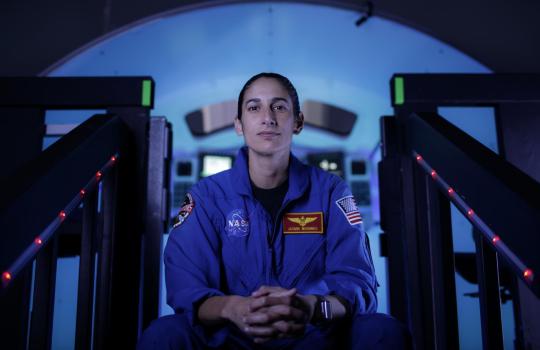
“Surround yourself with good people that have the characteristics that you want to grow in yourself. I think if you surround yourself with people like that you kind of bring each other up to a higher and higher level as you go.”
Jasmin Moghbeli, a U.S. Marine Corps major, considers Baldwin, New York, her hometown. She earned a bachelor's degree in aerospace engineering with information technology at MIT, followed by a master’s degree in aerospace engineering from the Naval Postgraduate School.
She is a distinguished graduate of the U.S. Naval Test Pilot School and has accumulated more than 1,600 hours of flight time and 150 combat missions.
Loral O’Hara

“I’m one of those people who have wanted to be an astronaut since I was a little kid, and I think that came from an early obsession with flying – birds, airplanes, rockets.”
This Houston native earned a bachelor’s degree in aerospace engineering at the University of Kansas and a Master of Science degree in aeronautics and astronautics from Purdue University. As a student, she participated in multiple NASA internship programs, including the Reduced Gravity Student Flight Opportunities Program, the NASA Academy at Goddard Space Flight Center, and the internship program at the Jet Propulsion Laboratory.
O’Hara was a research engineer at Woods Hole Oceanographic Institution, where she worked on the engineering, test and operations of deep-ocean research submersibles and robots. She is also a private pilot and certified EMT and wilderness first responder.
Dr. Frank Rubio
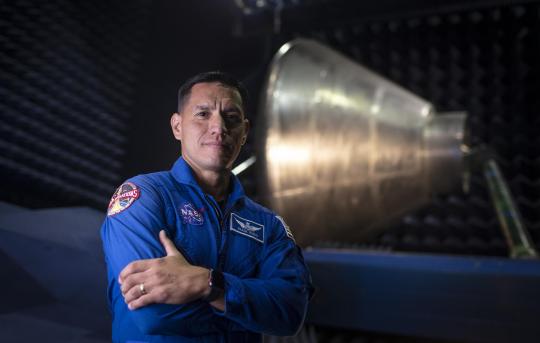
“I just figured it was time to take the plunge and try it. And so, I did and beyond all dreams, it came true.”
Dr. Francisco “Frank” Rubio, a U.S. Army lieutenant colonel, is originally from Miami. He earned a bachelor’s degree in international relations from the U.S. Military Academy and earned a doctorate of medicine from the Uniformed Services University of the Health Sciences.
Rubio served as a UH-60 Blackhawk helicopter pilot and flew more than 1,100 hours, including more than 600 hours of combat and imminent danger time during deployments to Bosnia, Afghanistan, and Iraq. He is also a board certified family physician and flight surgeon.
Jessica Watkins
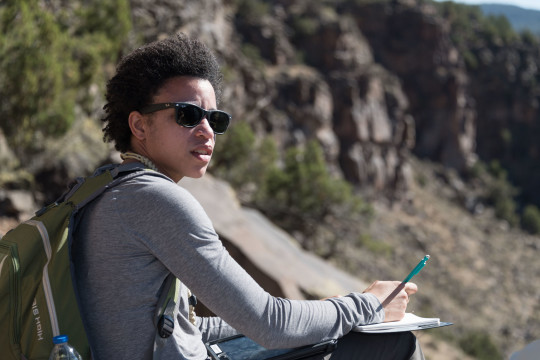
“I’ve always been interested in exploring space. What’s out there and how can we as humans reach those outer stars and how can we learn more information about who we are through that process.”
This Colorado native earned a bachelor’s degree in geological and environmental sciences at Stanford University, and a doctorate in geology from the University of California, Los Angeles. Watkins has worked at Ames Research Center and the Jet Propulsion Laboratory.
Watkins was a postdoctoral fellow at the California Institute of Technology, where she collaborated on the Mars Curiosity rover, participating in daily planning of rover activities and investigating the geologic history of the Red Planet.
Learn more about the new space heroes right here: https://www.nasa.gov/newastronauts
Make sure to follow us on Tumblr for your regular dose of space: http://nasa.tumblr.com.
2K notes
·
View notes
Text
Sheldon Anderson is a college professor from Minnesota
More than three million Lego bricks have been delivered to the site."Things like power supply, sanitation and plumbing coming into the house are as they could be for a real building. Everything within my Lego house must as far as possible be Lego," he said.May said although he already had thousands of Lego bricks, he could not be sure there would be enough."So if people do have bricks that aren't being used that they would be happy to donate to a very worthy pioneering Lego cause, then we'll be happy to take them off your hands."The event follows two other successful toy challenges which saw May build what was said to be the world's first Plasticine garden, which won the People's Choice Award at the Chelsea Flower Show, and also the world's largest model plane. The BBC is not responsible for the content of external sites.
cheap nfl jerseys Nolan Carroll has played well this year, and needs to continue it Sunday. Eric Ebron can be a tough matchup when he healthy, but it sounds like he won play Sunday. The Eagles will catch a break there. What Constitutes Child Pornography? cheap nfl jerseys Although some might think so, child porn is not protected speech under the Constitution. It's illegal in New Jersey and across the country because it's a form of child exploitation, and this includes: Possession Viewing Distributing or sharing Receiving Producing, photographing, or filming a minor in such activities Excluded, however, according to federal criminal statutes is possession of materials with "serious literary, artistic, political, or scientific value." Still, even this can be difficult to prove in court. Another thing the prosecution must prove in court is that you had these materials with a guilty mind (also called a "mens rea"), meaning that you knew or reasonably should have known the materials were of a sexual child exploitative nature. cheap nfl jerseys
Cheap Jerseys from china ROBBINS: This is the only time they see each other. Sheldon Anderson is a college professor from Minnesota, tall with a shock of white hair under his hat. He teaches European history. Due to the limited amount of positions available in most fire departments, prospective firefighters often seek to increase their career opportunities by obtaining a EMT Paramedic certification. Most EMT Paramedic training programs can take up to two years to complete because students must first earn their EMT Basic and Intermediate certifications. Completing a two or four year college degree in fire science or a related field can also make firefighters more competitive and prepare them for management positions.. Cheap Jerseys from china
nfl jerseys Taste of the NFL, an annual event featuring a chef from each NFL city serving a signature dish alongside a current or alumni player, will be held Feb. 6 at San Francisco's Cow Palace arena. Dishes will be paired with wines from California's E. https://www.wholesalejerseyslan.com/ Earlier in the day, the players visited Target Center for the first time as Timberwolves. Wiggins walked around the locker room and slipped on a white No. 22 Wolves jersey with his name on the back. nfl jerseys
wholesale nfl jerseys from china On Monday, Aug. 15, the JCC of Central New Jersey beat the teams from Panama and San Diego. They went on to a nail biting win over Fort Lauderdale Tuesday morning, Aug. Gulf Shores, Alabama If you want to relax and spend some time by yourself or with your loved ones or just simply want to get away from the bustle of everyday life, the beaches of Alabama are ideal for you. Take your sunscreen, beach towels, and cooler with you and let's head south. The informal and relaxed atmosphere of this southern city is all you need to rejuvenate your soul. wholesale nfl jerseys from china
Cheap Jerseys from china With SodaStream, people fill a bottle with water and press down on a button to carbonate the liquid. They can add as much carbonation and flavouring as they want. nfl jerseys A complaint among some users is that the carbonation comes from a CO2 canister, which needs to be replaced every several weeks or so, depending on how often it's used.. Cheap Jerseys from china
wholesale jerseys Child chap sizes go according to age, not exact measurement. A small will fit a child 2 3 years old, a medium about 4 6 years old, and a large, http://www.okcheapjerseys.com/ about 7 10 years old. They come with full detail fringe, conchos with suede dangles, pockets, two tone colors, and stud accents. wholesale jerseys
Cheap Jerseys china Earthquakes goalkeeper He has to drive the exact same route to games, even if he could escape heavier traffic by going another way. He warms up exactly the same way before each match, kissing his glove and then touching the glove to the crossbar and both posts. If the Quakes win, he makes sure to wear the same gloves at the next match. Cheap Jerseys china
wholesale jerseys Related readings: Roadside bomb kills 21 in S Afghanistan Roadside bomb kills 10 in west Afghanistan Bomb kills 7 civilians in E Afghanistan Bomb blast kills 3 policemen in Afghanistan The blast took place inside a shop Wednesday in Nadir Shahkot district left one innocent civilian dead and injured two others, Cheap Jerseys china Nasiri told Xinhua. Dustin Brown Authentic Jersey. Hes not off to a bad start, though. wholesale jerseys
wholesale jerseys As this resume makes clear, it is not necessary to have a requisite certification to get a job as an entry level housekeeper. Most hospitals do provide training so as to train employees about what is expected from them. https://www.cheapjerseys18.com/ Hospital housekeeping is a profession that has picked up in the recent times and has seen a lot of openings wholesale jerseys.
1 note
·
View note
Text
Get the training you need to become an Emergency Medical Technician. Our EMT basic classes in San Diego offer comprehensive instruction, hands-on practice, and certification. Join us today and start your journey to becoming an EMT!
0 notes
Text
Aviation Rescue Swimmer
RESPONSIBILITIESAs an AIRR, you must be prepared to enter the most treacherous conditions to provide recovery and relief for rescue missions, humanitarian assistance and operational support.
Some of your duties might include:* Working as an aircrew on a SH-60 helo, where the primary duties are to coordinate with the pilots to ensure success of various fleet missions* Saving pilots of downed aircraft, people aboard stranded or capsized vessels at sea, or hikers and mountain climbers in danger* Rescuing civilians during natural disasters and collaborating with other forces, such as the Coast Guard* Delivering aid and supplies to other countries in humanitarian operations* Providing support to Naval Special Warfare Operations* Conducting surveillance in anti-submarine warfare and drug interdiction operations* Operate radar, Forward Looking Infrared sensors, missile systems and door guns in anti-surface operations.* Transporting troops and cargo to and from shipsWORK ENVIRONMENTAviation Rescue Swimmers may help just about anyone, in almost any environment.
They might have to save a family on the other side of the globe who is desperately trying to survive a destructive storm, the crew of a sinking ship off the Pacific coast, or a wounded mountain climber hanging from a nearly inaccessible cliff.AIRRs may be assigned to Helicopter Maritime Strike Squadron (HSM) sea or shore duty in any part of the world.
They are assigned to squadrons at Naval Air Stations and typically deploy aboard aircraft carriers, surface combatants and support ships.TRAINING & ADVANCEMENTAviation Rescue Swimmers must be prepared to operate in any challenging environment.
AIRR training is realistic and one of the most demanding, life-altering training programs in the Navy.AIRR candidates undergo almost two years of training in advanced swimming/lifesaving techniques, helicopter mission equipment and crew served weapons systems” before reporting to their first squadron.
Throughout training, candidates will be continually tested, mentally and physically, as they advance to more rigorous and challenging scenarios.
Training includes:* Water and land survival and flight safety (4 weeks at Aircrew Candidate School in Pensacola, Fla.)* Search and Rescue Swimming Skills (5 weeks at Rescue Swimmer School in Pensacola, Fla.)* Basic skills in Naval Aviation (14 weeks on average at Class “A” Technical School in Pensacola, Fla.)* Survival, Evasion, Resistance and Escape (SERE) techniques (2 weeks at SERE School in North Island, Calif., or Portsmouth NH)* Aircraft systems (28 weeks on average at a Naval Air Station)Air Rescuse UnitsAfter graduation, an AIRR may be assigned to a helicopter command at sea or on shore duty in various locations thoughout the U.S., including San Diego CA, Norfolk VA, Jacksonville FL, China Lake, Calif., Whidbey Island, Wash., Key West, Fl.
and many others.Advanced Education & TrainingBased on performance and the needs of the Navy, you could potentially be eligible to receive additional training in:* EMT training* Advanced Rescue Swimmer School (includes swift water, high seas, cave and cliff rescue training)Senior Enlisted AIRRs may also be selected to become:* Schoolhouse instructors* Weapons instructors* Master rappellers/instructorsPromotion opportunities are regularly available but competitive and based on performance.
It’s also important to note that specialized training received and work experience gained in the course of service can lead to valuable credentialing and occupational opportunities in related fields.EDUCATION OPPORTUNITIESMembers of the Naval Special Warfare/Naval Special Operations (NSW/NSO) community have any number of unique opportunities to advance their knowledge.
Navy training provides skills and knowledge in everything from military tactics and small arms use to survival and a number of other tactical military procedures.Beyond offering access to professional credentials and certifications, Navy training in the NSW/NSO community can translate to credit hours toward a bachelor’s or associate degree through the American Council on Education.
You may also continue your education through opportunities like the following:* Fleet Replacement Aircrew/Mission Tactical Instructor* Navy College Program and Tuition Assistance* Post-9/11 GI BillQUALIFICATIONS & REQUIREMENTSNo college degree is required to become an Enlisted Navy AIRR, but a high degree of difficulty and satisfaction come standard with nearly everything you’ll do.
Training is tough and ongoing.To qualify for Rescue Swimmer Training, both men and women must:* Meet specific eyesight requirements: uncorrected vision no worse than 20/100; correctable to 20/20 in both eyes with normal depth and color perception* Meet the minimum Armed Services Vocational Aptitude Battery (ASVAB) score: VE+AR+MK+MC=210 or VE+AR+MK+AS=210* Pass a PST in DEP/Boot Camp* Pass Class 1 Flight Physical* Be 30 years of age or younger* Must be a U.S.
citizen and eligible for security clearanceThe chart below highlights the current minimum Navy Physical Screening Test (PST) requirements for Navy Challenge Programs.NOTE: You should consult your physician or other health-care professional before starting any exercise regime or other fitness program to determine if it is right for your needs.
This is particularly true if you (or your family) have a history of medical illnesses or ailments that could be made worse by a change in physical activity.
Do not start a fitness program if your physician or health-care provider advises against it.General qualifications may vary depending upon whether you’re currently serving, whether you’ve served before or whether you’ve never served before.
The post Aviation Rescue Swimmer first appeared on Valley of the Sun Jobs. source https://valleyofthesunjobs.com/other-general/aviation-rescue-swimmer-64b0a2/?utm_source=rss&utm_medium=rss&utm_campaign=aviation-rescue-swimmer-64b0a2
0 notes
Text
Get the training you need to become an Emergency Medical Technician. Our EMT basic classes in San Diego offer comprehensive instruction, hands-on practice, and certification. Join us today and start your journey to becoming an EMT!
0 notes
Text
Meet Rampart — GMR Therapy Dog in Training
#Poop4U
The post Meet Rampart — GMR Therapy Dog in Training by Wendy Newell appeared first on Dogster. Copying over entire articles infringes on copyright laws. You may not be aware of it, but all of these articles were assigned, contracted and paid for, so they aren't considered public domain. However, we appreciate that you like the article and would love it if you continued sharing just the first paragraph of an article, then linking out to the rest of the piece on Dogster.com.
Rampart is only a puppy, but he already knows he has a very important job in his future. He is one of the newest members of the Global Medical Response (GMR) Therapy Dog Team. The dogs and their handlers are trained to help emergency personnel who experience trauma while in the field or on 911 calls.
A group that started with just two pups has since grown to more than 20 and gone from a program at American Medical Response (AMR) to its parent company GMR, allowing it to reach out to more paramedics and EMTs.
Photo: Courtesy Michael Romo
An important job
Rampart’s handler, Michael Romo, operations manager for the San Bernardino AMR, has had family dogs but had never even gone to a dog-training class before. It wasn’t until he was deployed to Florida to help after Hurricane Michael in 2018 that he saw the importance of having a therapy dog available to the crews. After a week helping in an area completely devastated, the 200-plus paramedics and EMTs were showing signs of understandable fatigue. Morale, which was never high due to the work being done, was dipping even lower. “The dogs showed up at camp one day, and people lit up,” Michael remembers. When he got back to his office in Victorville, California, he looked into what it would take for his county to have access to its own therapy dog.
All employees in the Victorville office were polled to verify that they were OK with a dog in the facility and would be comfortable looking after him if Michael wasn’t available. Everyone was excited. Many had been following the GMR Therapy Dog Team on its Facebook page and knew about the program. Michael admits, “To be able to say that we were going to have that here in our operation was pretty exciting.”
Once the office and Michael’s home passed inspection, they needed to identify a breeder and trainer. GMR requires that the dogs in their program be hypoallergenic and be low shedding so that they can be in the office, on location, in public and loved up by personnel without leaving behind a trail of discarded fur. A Goldendoodle breeder had a dog who herself was a therapy dog. It seemed like the perfect fit. GMR purchased three dogs from her litter. These three boys would be trained to be working pups in California — one in San Diego County, one in Ventura County and a fluffy, light-brown love bug named Rampart would find his way to Michael. Training started almost right away. Rampart passed his puppy obedience class. His next test is coming soon and will prove his knowledge of the AKC S.T.A.R. Puppy training. Two more months of training after that, and have access to its own therapy dog.
All employees in the Victorville office were polled to verify that they were OK with a dog in the facility and would be comfortable looking after him if Michael wasn’t available. Everyone was excited. Many had been following the GMR Therapy Dog Team on its Facebook page and knew about the program. Michael admits, “To be able to say that we were going to have that here in our operation was pretty exciting.”
Once the office and Michael’s home passed inspection, they needed to identify a breeder and trainer. GMR requires that the dogs in their program be hypoallergenic and be low shedding so that they can be in the office, on location, in public and loved up by personnel without leaving behind a trail of discarded fur. A Goldendoodle breeder had a dog who herself was a therapy dog. It seemed like the perfect fit. GMR purchased three dogs from her litter. These three boys would be trained to be working pups in California — one in San Diego County, Rampart will be tested for his Canine Good Citizen award. At that point, Rampart will start his training to get his final certification — that of a therapy dog.
Rampart isn’t the only one in class. Michael, his co-worker and secondary handler, and wife all attend classes with Rampart. “They don’t train the dog, they train the human,” Michael explains. Michael and Rampart’s secondary handler also must go through Critical Incidence Stress Debriefing (CISD). He explains it as peer-counseling class for paramedics and EMTs, and it is mandatory for all GMR therapy dog handlers. The CISD offers a number of layers of help to the emergency personnel. One of those layers is a therapy dog. There are also professional counselors available over the phone or in person, but some people may want to talk to someone who can relate to them peer to peer, and that is what the handlers need to learn to do.
Making people happy
GMR now has dogs and trained handlers in locations all over the United States. The dog and handler are flown to wherever they are needed. During the recent El Paso shooting, for example, a duo was sent to help. Soon that will be Rampart and Michael. Until then, every day Rampart puts on his vest and collar, which is a signal to him that it is time to work, gets his seatbelt put on and heads to the office with his dad.
Field responders come through the office, or Michael and Rampart will take a trip to a station.
“As I am pulling in, you hear the crews yelling ‘Rampart!’ They get so excited to see him.” Even without all his certifications and awards, Rampart is already performing an important part of his worker dog duties — making people happy. “When you walk in, people light up when they see a dog coming into the workplace.”
There is no doubt that Rampart realizes he is special and has an important job. He can be seen prancing through the hall like the rock star he is.
Michael is looking forward to getting to work with his new partner. He likes the fact that they are helping people. In what can be a stressful and sometimes thankless job, he thinks it makes a big difference for them to make people smile and make their day a little better.
“We are helping the people that are helping others in the community and that is a big positive for me.”
Photo: Courtesy Michael Romo
A Q&A With Michael Romo
Q: What is Rampart’s diet? A: Nature’s Logic and occasionally some vegetables (carrots, broccoli, green beans).
Q: What type of gear does Rampart use? A: Dog Gear travel bag, Amazon Basic Crate, Mighty Paw Safety Belt and Bolux Vest.
Q: Do you groom Rampart yourself or do you take him to someone to be groomed? A: Rampart is groomed about every four weeks at PetSmart, by a groomer who has Goldendoodles herself.
Q: Does Rampart have any nicknames? A: Not really, although we sometimes call him Buddy.
Q: If Rampart had a super power, what would it be and why? A: Making people laugh and smile, his natural puppy clumsiness and his love of being petted. He will come to people and plop his head on their lap, and once you start petting he will awkwardly flop onto his back to have his belly rubbed.
Q: What is the weirdest or funniest thing Rampart does? A: Pretty much every good nap during the day he will dream and “talk” in his sleep. He barks and makes noises as his paws flinch, and his mouth looks like he is nibbling or just licking the air. We say he is chasing balls in his sleep.
Learn more about the GMR Therapy Dog Team on Facebook.
The post Meet Rampart — GMR Therapy Dog in Training by Wendy Newell appeared first on Dogster. Copying over entire articles infringes on copyright laws. You may not be aware of it, but all of these articles were assigned, contracted and paid for, so they aren't considered public domain. However, we appreciate that you like the article and would love it if you continued sharing just the first paragraph of an article, then linking out to the rest of the piece on Dogster.com.
Poop4U Blog via www.Poop4U.com Wendy Newell, Khareem Sudlow
0 notes
Text
Feeling out of shape and fat? Here’s how to fix that: Start walking.
By Jenny Rough, Washington Post, June 3, 2017
Diana Nyad--the endurance athlete who, at age 64, swam from Cuba to Florida--has another big dream. It doesn’t involve water, poisonous jellyfish or an exhausting 111-mile journey that took her 53 hours. Instead, it involves millions of feet, which Nyad wants to see stride across every state in America.
“Sitting has become the new smoking,” she often says, quoting James A. Levine, a Mayo Clinic physician, whose now-popular phrase speaks to the way our culture’s sedentary lifestyle is ruining our health. More than 70 percent of adults are overweight or obese, according to the Centers for Disease Control and Prevention. For both men and women, heart disease is the leading cause of death. Half of U.S. adults have diabetes or pre-diabetes, a 2015 JAMA study reported.
“We are sick of being fat, America,” Nyad announced to TMZ Sports in 2014, a year after her swim, when asked what she was up to next. “We are sick of kids having diabetes. We’re going to be walkers. Just like the Chinese do tai chi every morning, we’re going to walk.”
In 2016, Nyad and her best friend, Bonnie Stoll, a former professional racquetball player and the leader of Nyad’s Cuba expedition, launched EverWalk, an initiative that aims to get Americans on their feet. Anybody can commit to walking at least three times a week by signing a pledge on EverWalk’s website (at everwalk.com), where Nyad and Stoll recently posted a training schedule and opened registration for their next big event: EverWalk New England, a seven-day, 150-mile trek from Boston to Portland, Maine. It will begin in Copley Square on Sunday, Sept. 10, and end at Cape Elizabeth (two miles from Portland) on Saturday, Sept. 16. Participants can register for a short walk (five or 10 miles), one day (20 miles), multiple days or the whole thing.
“It’s a stunning, idyllic New England showcase of a route, almost all of it along the ocean’s edge,” says Nyad, who recently gathered more than 600 EverWalkers to team up with the nonprofit River LA for a 6.5-mile morning walk to celebrate the development of a 51-mile no-car path along the Los Angeles River.
Unlike swimming, cycling or running, which require special equipment and can be hard on the body, walking is the perfect way to get fit and improve your well-being, Nyad, 67, says. It’s a low-impact activity that almost anyone can do: young, old, fat, thin, rich or poor.
More than 3,000 people have taken the EverWalk pledge so far. Eventually Nyad and Stoll envision tens of thousands, hundreds of thousands, even a million people joining them virtually for regular walks, no matter where people live. They are working on a website they hope will become “the word in all things walking,” where people can find walking partners, vacation walking routes, training tips and incentives.
EverWalk’s inaugural event in October was a seven-day, 133-mile trek from Los Angeles to San Diego. About 300 people participated as day-trippers, virtual walkers (who walked in their own home town) or epic walkers (who covered the whole distance). One of the epic walkers was Laura Petersen, 49, a statistician at UCLA.
Petersen has never been the athletic type, even as a child. “I wasn’t picked last for the teams, but I was picked second to last,” she recalls. As an adult, she wasn’t particularly active either. That is, until eight years ago when her family began taking walks after dinner as a way to get more exercise. Petersen and her son would walk for 30 minutes while her husband and daughter went farther and faster. The 30-minute walk turned to 45. Then Petersen also started walking during her lunch hour. When she came across an announcement about EverWalk’s first event, she felt ready to try 20 miles a day for a week straight.
EverWalk provided her with a training schedule, and Petersen recalls her first long-distance warm-up walk of 18 miles.
“The blisters kicked in at about Mile 16,” she says.
By the time the actual event took place, she had learned to better care for her feet. Other EverWalk participants weren’t as prepared, but Nyad and Stoll had an EMT delivering first aid as well as a second EMT who biked back and forth along the route to keep an eye on walkers and point the way for the directionally challenged. There was also a bus for those who needed a break.
Petersen used each rest stop--about every five miles--to rehydrate and refuel. At night, she slept in local hotels where her luggage had been delivered. (EverWalk, which charged a registration fee of $395, arranged discounts on hotels and provided lunch, snacks and transportation.)
Petersen made it the entire distance.
“I learned that just because you think of yourself as a type of person, like nonathletic, doesn’t mean you have to live your whole life that way,” she says.
That’s exactly what Nyad and Stoll are hoping for: a nation of people willing to push away from their chairs and take to the sidewalks and park trails.
“Most people will never swim from Cuba to Florida or run the New York City Marathon,” Nyad says. “You have to work so hard and be so focused. But people can imagine walking from Chicago to St. Louis or Portland to Seattle.”
The vision of an endurance event for the everyday American caught the attention of Chris Devona, 57, of Mount Prospect, Ill. Devona joined EverWalk’s first challenge despite his Stage 4 thyroid cancer. He walked with a brace because of knee replacement surgery, averaging about three miles every hour. Crossing the “achieve line” in San Diego was ultra-satisfying.
“To complete the whole route makes the average guy feel like he just won the Olympics,” Devona says.
It may seem strange that a function as basic as walking can trigger an overwhelming feeling of accomplishment. After all, humans are built to walk long distances. But we just don’t do it anymore.
According to the documentary “The Walking Revolution,” Americans stopped walking in the 1950s and 1960s when families began moving to the suburbs and the automobile became the favored mode of transportation. Add the television set. Computers. Social media. Alexa. Now we have a nation of sitters. What was once a normal part of daily living has become an effort Americans need to schedule.
By 2020, Nyad and Stoll intend to travel by foot across America.
Initially, their plan was to walk coast-to-coast with a million people, sort of like Forrest Gump. But after driving cross-country in an RV, they realized the trek works for one or two people but wouldn’t work well for the masses. The long stretches of remote areas were “not conducive to lots of folks coming out to meet up with us,” Nyad says.
So in recent months, Nyad and Stoll’s vision has changed. They continue to hold on to their dream of walking across America in some way--maybe by visiting all 50 states.
For now, EverWalk is dedicated to supporting anyone who walks--whether strolling around the neighborhood after dinner, running errands on foot or taking out the dog. “I don’t care if you’re walking with Avon or on the John Muir trail,” Stoll says, referring to breast cancer walks sponsored by the cosmetics company and the California hiking route. “Just start with the pledge to walk three times a week. You don’t have to be an athlete. It’s free and it’s for everyone. If you’re in a chair, pledge to do the roll.”
For some, walking has less to do with the physical and mental challenges and more to do with the spiritual element. Linda Fitts, 66, has walked the Camino del Santiago, a pilgrimage route in Spain, three times. As a physician who worked in internal medicine and hospice care, she was prompted to walk, in part, to recover from career burnout.
“I reached a point where I needed rest and reflection,” she says.
Fitts, who lives in Southern California, also participated as an epic walker in the trek from Los Angeles to San Diego.
For her, moving along a walking path has a calming effect.
“I like to use the image of not only am I walking the road ahead of me, the road is walking through me. When I begin to feel that flow, it’s a very cleansing and moving process for me,” Fitts says.
The word “walk” means “way of life.” And for many, it really is.
“I never regret having gone for a walk,” Petersen says. “I can say to myself, ‘I don’t feel like it,’ and drag myself out, and I’ll never not feel a little bit better than when I left the house.”
1 note
·
View note
Text
Aviation Rescue Swimmer
RESPONSIBILITIESAs an AIRR, you must be prepared to enter the most treacherous conditions to provide recovery and relief for rescue missions, humanitarian assistance and operational support.
Some of your duties might include:* Working as an aircrew on a SH-60 helo, where the primary duties are to coordinate with the pilots to ensure success of various fleet missions* Saving pilots of downed aircraft, people aboard stranded or capsized vessels at sea, or hikers and mountain climbers in danger* Rescuing civilians during natural disasters and collaborating with other forces, such as the Coast Guard* Delivering aid and supplies to other countries in humanitarian operations* Providing support to Naval Special Warfare Operations* Conducting surveillance in anti-submarine warfare and drug interdiction operations* Operate radar, Forward Looking Infrared sensors, missile systems and door guns in anti-surface operations.* Transporting troops and cargo to and from shipsWORK ENVIRONMENTAviation Rescue Swimmers may help just about anyone, in almost any environment.
They might have to save a family on the other side of the globe who is desperately trying to survive a destructive storm, the crew of a sinking ship off the Pacific coast, or a wounded mountain climber hanging from a nearly inaccessible cliff.AIRRs may be assigned to Helicopter Maritime Strike Squadron (HSM) sea or shore duty in any part of the world.
They are assigned to squadrons at Naval Air Stations and typically deploy aboard aircraft carriers, surface combatants and support ships.TRAINING & ADVANCEMENTAviation Rescue Swimmers must be prepared to operate in any challenging environment.
AIRR training is realistic and one of the most demanding, life-altering training programs in the Navy.AIRR candidates undergo almost two years of training in advanced swimming/lifesaving techniques, helicopter mission equipment and crew served weapons systems” before reporting to their first squadron.
Throughout training, candidates will be continually tested, mentally and physically, as they advance to more rigorous and challenging scenarios.
Training includes:* Water and land survival and flight safety (4 weeks at Aircrew Candidate School in Pensacola, Fla.)* Search and Rescue Swimming Skills (5 weeks at Rescue Swimmer School in Pensacola, Fla.)* Basic skills in Naval Aviation (14 weeks on average at Class “A” Technical School in Pensacola, Fla.)* Survival, Evasion, Resistance and Escape (SERE) techniques (2 weeks at SERE School in North Island, Calif., or Portsmouth NH)* Aircraft systems (28 weeks on average at a Naval Air Station)Air Rescuse UnitsAfter graduation, an AIRR may be assigned to a helicopter command at sea or on shore duty in various locations thoughout the U.S., including San Diego CA, Norfolk VA, Jacksonville FL, China Lake, Calif., Whidbey Island, Wash., Key West, Fl.
and many others.Advanced Education & TrainingBased on performance and the needs of the Navy, you could potentially be eligible to receive additional training in:* EMT training* Advanced Rescue Swimmer School (includes swift water, high seas, cave and cliff rescue training)Senior Enlisted AIRRs may also be selected to become:* Schoolhouse instructors* Weapons instructors* Master rappellers/instructorsPromotion opportunities are regularly available but competitive and based on performance.
It’s also important to note that specialized training received and work experience gained in the course of service can lead to valuable credentialing and occupational opportunities in related fields.EDUCATION OPPORTUNITIESMembers of the Naval Special Warfare/Naval Special Operations (NSW/NSO) community have any number of unique opportunities to advance their knowledge.
Navy training provides skills and knowledge in everything from military tactics and small arms use to survival and a number of other tactical military procedures.Beyond offering access to professional credentials and certifications, Navy training in the NSW/NSO community can translate to credit hours toward a bachelor’s or associate degree through the American Council on Education.
You may also continue your education through opportunities like the following:* Fleet Replacement Aircrew/Mission Tactical Instructor* Navy College Program and Tuition Assistance* Post-9/11 GI BillQUALIFICATIONS & REQUIREMENTSNo college degree is required to become an Enlisted Navy AIRR, but a high degree of difficulty and satisfaction come standard with nearly everything you’ll do.
Training is tough and ongoing.To qualify for Rescue Swimmer Training, both men and women must:* Meet specific eyesight requirements: uncorrected vision no worse than 20/100; correctable to 20/20 in both eyes with normal depth and color perception* Meet the minimum Armed Services Vocational Aptitude Battery (ASVAB) score: VE+AR+MK+MC=210 or VE+AR+MK+AS=210* Pass a PST in DEP/Boot Camp* Pass Class 1 Flight Physical* Be 30 years of age or younger* Must be a U.S.
citizen and eligible for security clearanceThe chart below highlights the current minimum Navy Physical Screening Test (PST) requirements for Navy Challenge Programs.NOTE: You should consult your physician or other health-care professional before starting any exercise regime or other fitness program to determine if it is right for your needs.
This is particularly true if you (or your family) have a history of medical illnesses or ailments that could be made worse by a change in physical activity.
Do not start a fitness program if your physician or health-care provider advises against it.General qualifications may vary depending upon whether you’re currently serving, whether you’ve served before or whether you’ve never served before.
The post Aviation Rescue Swimmer first appeared on Valley of the Sun Jobs. source https://valleyofthesunjobs.com/other-general/aviation-rescue-swimmer-0bc0c4/?utm_source=rss&utm_medium=rss&utm_campaign=aviation-rescue-swimmer-0bc0c4
1 note
·
View note